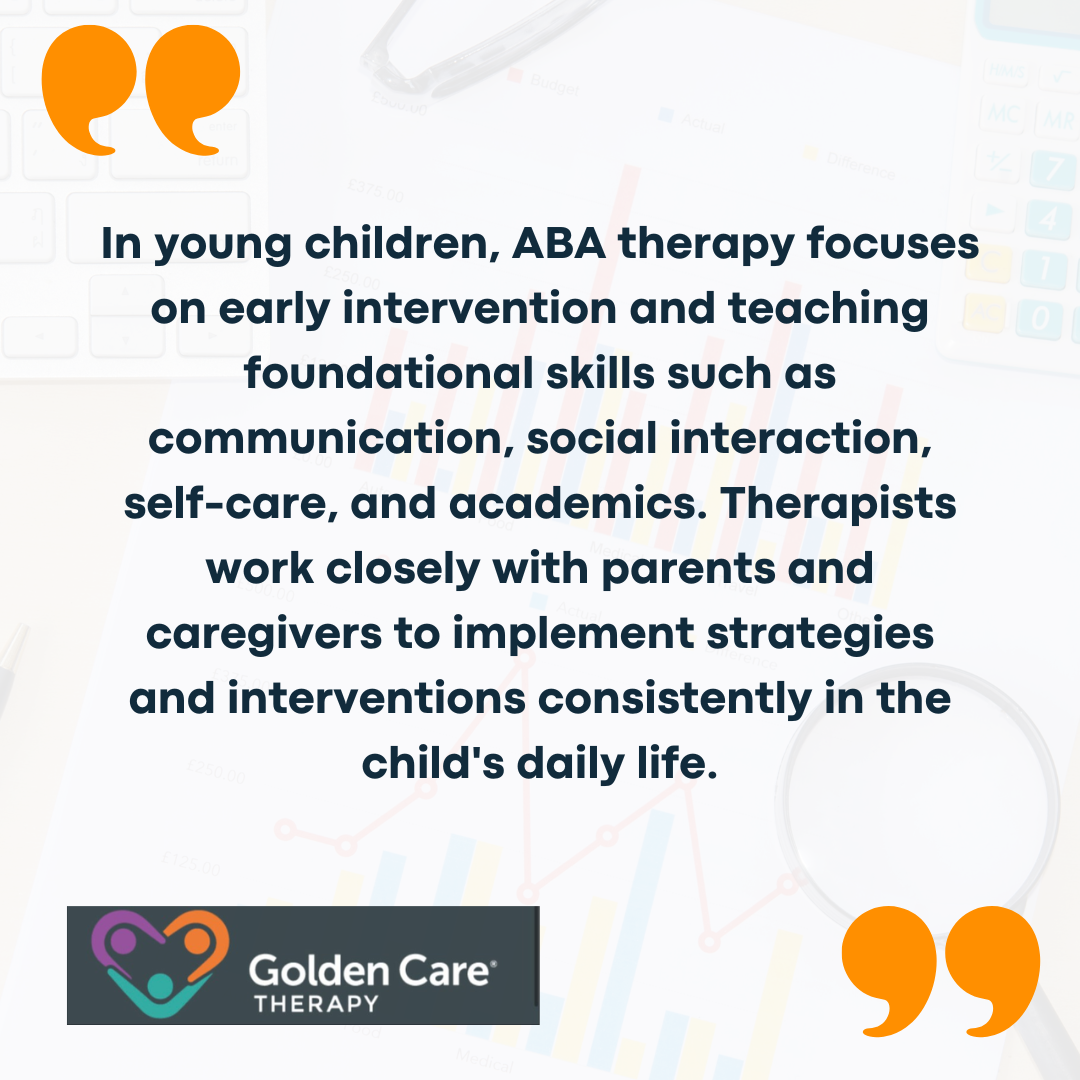
Table of Contents
To gain a comprehensive understanding of Applied Behavior Analysis (ABA) therapy, it is important to first grasp the concepts of autism and how ABA therapy can benefit individuals with autism.
We have prepared an extensive list of the frequently asked questions regarding ABA therapy and their associated answers. Let’s get started.
What is Autism?
Autism (Autism Spectrum Disorder) is a complex brain-based disorder that affects multiple areas of development. It impacts social interaction, verbal and nonverbal communication, imagination, behavior, and interests. The symptoms of autism typically manifest early in life, sometimes in infancy, but generally before the age of 3.
The condition is diagnosed when children exhibit atypical development in areas such as social interaction, communication, and behavior. It is considered the fastest-growing developmental disability diagnosis.
According to the Centers for Disease Control and Prevention (CDC), 1 in 88 children in the United States has an autism spectrum disorder, with boys being more commonly affected than girls.
What is ABA Therapy?
ABA or Applied Behavior Analysis therapy is an evidence-based treatment approach that aims to improve the quality of life for individuals with autism. The therapy focuses on building skills and reducing dangerous or harmful behaviors.
ABA therapy can be intensive, particularly for children, who may receive 20 to 40 hours of therapy each week. Meanwhile, adolescents and adults typically only require fewer hours.
The therapy involves working closely with families to ensure that the skills learned in therapy are applied in everyday life situations. This collaboration is crucial for individuals to generalize and maintain the skills they acquire during therapy.
What are the Essentials of ABA Therapy?
When considering ABA therapy for individuals with autism, it’s important to understand the core essentials of this evidence-based treatment. ABA therapy aims to improve the quality of life for individuals with autism by building skills and reducing dangerous or harmful behaviors.
ABA therapy is grounded in scientific research and is considered an evidence-based treatment for individuals with autism. It utilizes principles of learning and behavior science to help individuals develop and strengthen adaptive behaviors while reducing challenging behaviors.
Its effectiveness has been supported by numerous studies and is recognized as an effective treatment by organizations such as the American Psychological Association and the National Institute of Mental Health.
One of the key strengths of ABA therapy is its individualized approach. ABA therapy recognizes that each individual with autism has unique needs, skills, preferences, interests, challenges, and family situations. As a result, therapy plans are carefully tailored to address these specific factors.
How is ABA Therapy Conducted?
An initial assessment is conducted to evaluate the individual’s strengths, weaknesses, and areas of focus. Based on this assessment, a board-certified behavior analyst (BCBA) develops an individualized treatment plan that outlines the specific goals and objectives for therapy.
The plan takes into account the individual’s current abilities and identifies the necessary skills to be targeted for improvement.
Tailored therapy plans in ABA therapy encompass a wide range of areas, including communication skills, social skills, daily living skills, academic skills, and behavior management. The plans are often comprehensive and cover various aspects of an individual’s life to ensure that the skills learned are applicable and beneficial in real-world situations.
How Do I Choose the Right ABA Therapists?
When it comes to selecting an Applied Behavior Analysis (ABA) therapist for your loved one with autism, it is essential to consider their qualifications and approach to therapy.
ABA therapy requires highly trained professionals who can provide effective and individualized treatment.
One of the key factors to consider is their certification as a Board-Certified Behavior Analyst (BCBA). BCBAs are professionals who have met the rigorous standards set by the Behavior Analyst Certification Board (BACB). They possess the knowledge and skills necessary to develop and implement ABA therapy programs effectively.
BCBAs have completed a master’s degree in behavior analysis or a related field, along with extensive supervised experience and a comprehensive examination. This certification ensures that they are well-versed in the principles and techniques of ABA therapy and adhere to ethical guidelines established by the BACB.
In addition to BCBA certification, it is also important to consider the qualifications and approach of ABA therapists. Qualified ABA therapists should have experience in developing and implementing individualized ABA treatment plans based on the unique needs, goals, and challenges of each individual.
They should be knowledgeable about evidence-based strategies and techniques to address a wide range of behaviors and skill deficits associated with autism.
Is ABA Therapy Effective?
When it comes to ABA therapy, interventions are tailored to meet the unique needs and goals of each individual with autism. These interventions are designed to promote positive behavior, enhance communication skills, and improve overall quality of life.
A fundamental aspect of ABA therapy is the establishment of customized therapy goals. A qualified and experienced board-certified behavior analyst (BCBA) works closely with the individual and their family to identify specific areas of focus. These goals are based on the individual’s strengths, needs, and desired outcomes.
Whether it’s improving social skills, enhancing communication abilities, or reducing challenging behaviors, the therapy goals are designed to address the unique challenges faced by individuals with autism.
By setting clear objectives, ABA therapy provides a structured framework for progress and growth.
The therapy emphasizes the importance of data collection and progress monitoring. During each therapy session, data is collected to track the individual’s progress toward the therapy goals. This data helps the therapist assess the effectiveness of the interventions and make informed decisions about adjustments if needed.
If an individual is not making the desired progress, the therapist may reevaluate the intervention strategies and make necessary adjustments to better meet the individual’s needs.
This flexibility allows for a personalized approach that can be modified as the individual progresses through therapy.
Does It Work for Different Age Groups?
ABA therapy has shown effectiveness in improving skills and behaviors in individuals with autism across various age groups. The therapy is highly individualized and takes into account the specific needs, strengths, and challenges of each person.
The goals and interventions are determined based on the age and developmental stage of the individual.
Early intervention has been shown to have significant positive impacts on long-term outcomes for children with autism.
For adolescents and adults, ABA therapy continues to address areas of development and independence. The goals may shift to encompass skills needed for a successful transition into adulthood, such as vocational training, independent living skills, and community integration.
ABA therapy provides individuals with strategies to navigate social interactions, manage emotions, and develop functional skills that promote independence and enhance quality of life.
Is the Involvement of Family Members Necessary?
Family involvement is a crucial component of ABA therapy across all age groups. Families play a significant role in supporting the individual’s progress and generalizing skills learned in therapy to everyday life. Therapists collaborate with parents and caregivers to develop strategies and provide training on how to implement interventions effectively.
In the case of young children, parents often participate actively in therapy sessions, learning techniques to reinforce desired behaviors and promote skill development.
They are encouraged to incorporate ABA principles into daily routines and activities, providing consistent opportunities for the child to practice and generalize skills.
For adolescents and adults, family members can continue to support the individual’s progress by using ABA principles in their interactions and providing ongoing reinforcement for desired behaviors.
Family involvement helps create a supportive environment that encourages the individual to practice and maintain the skills learned in therapy.
Sources:
https://www.autismspeaks.org/blog/questions-and-answers-about-aba
https://www.mcneese.edu/autism/frequently_asked_questions
https://www.autismspeaks.org/blog/questions-ask-aba-therapist
- Autism Routine Disruption in Adults: Coping Tips - July 16, 2024
- Autism and Obsession: An Overview - July 16, 2024
- Autism and Taking Clothes Off: Management Tips - July 16, 2024





